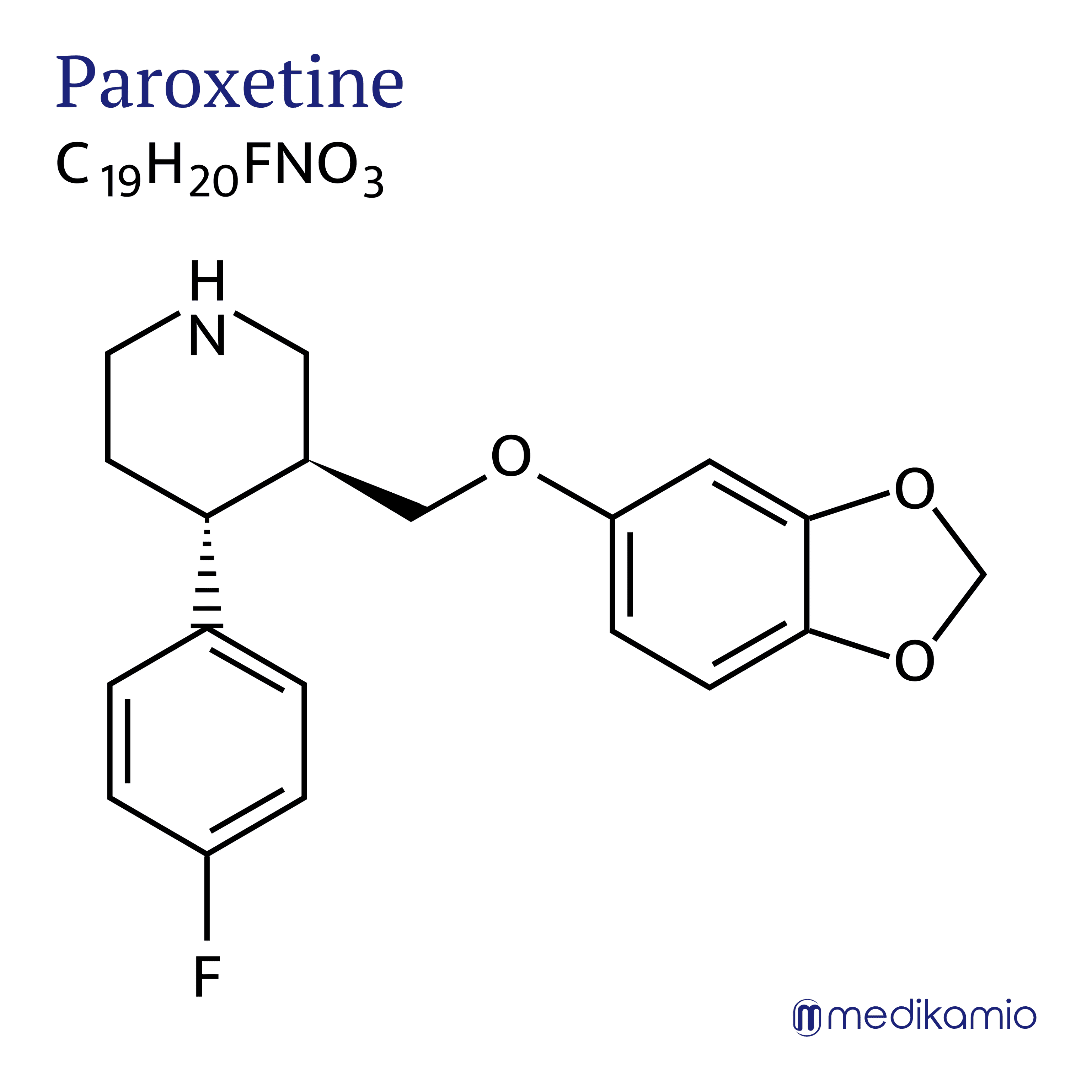Basics
Paroxetine is an active ingredient for the treatment of depression, post-traumatic stress disorder and anxiety, panic and obsessive-compulsive disorders. It belongs to the group of serotonin reuptake inhibitors (SSRIs). Paroxetine is usually available as a white crystalline (crystal-forming) powder. It is very potent and acts specifically (selectively) on the serotonin transporter SERT in the synaptic cleft. However, due to its very potent effect, withdrawal symptoms can also be more severe if the drug is suddenly discontinued.


